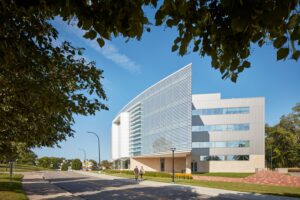
- Kim Kisner
- Community
- 10/03/2023
Rainy Hamilton Jr. Talks to SBN Detroit About Crafting Sustainable Communities that Inspire Change
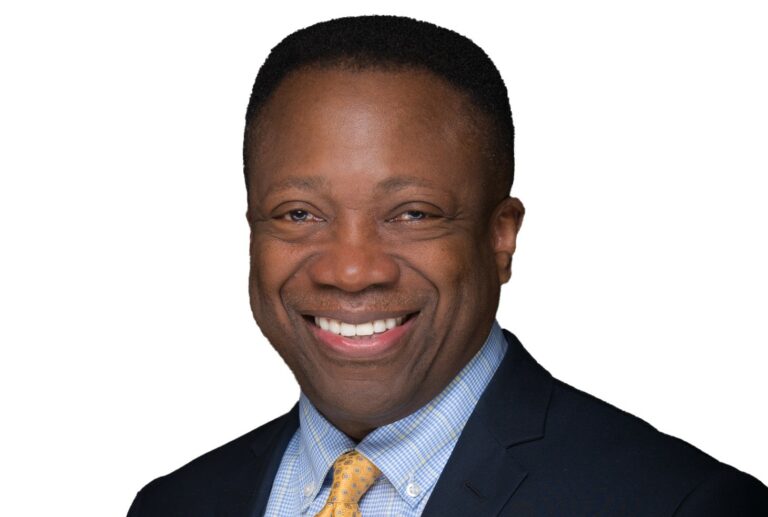
Hamilton Anderson Associates (HAA) sits in the heart of what was once Harmonie Park and is now Paradise Valley – and has since the architecture firm’s start in 1994. Its doctrine is to ‘design sustainable communities that inspire change,’ and this encompasses not only architecture, but interior design, landscape architecture, urban design and planning, and development services.
The firm was founded by Rainy Hamilton Jr. and Kent Anderson. SBN Detroit spoke to Hamilton about the firm’s sustainability focus and impact on Southeast Michigan.
Q: Tell me about HAA as it relates to sustainability
A: This is a big topic. Overall, we are always looking to have a positive impact on our clients’ projects and ultimately their bottom line. We always strive to have their best interests in mind and toward that, we need to be cognizant of the design approach, and how we can spend their funds wisely and thoughtfully.
We incorporate products and materials that can be recycled or have been recycled, and that are manufactured locally, whenever possible.
We think about how we can craft design solutions that take into account the environment and the planet – such as how we can include passive energy generation like wind and solar power.
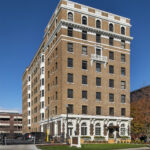
Also, how we manage stormwater is a significant topic with large impervious areas such as roofs and surface parking areas. All of these things are embedded in our thought process for every project.
Q: Has HAA always had a focus on sustainability?
A: Yes. As trained architects, it has become more commonplace over the last several decades to have this mindset around sustainability. We have been trained to push for well-crafted design solutions that minimize the impact on the environment. We are conscious of utilizing renewable resources such as lumber. Reforesting serves to replenish these natural resources when done properly. At Hamilton Anderson, sustainability is built into our design processes. It is in our DNA to minimize the impact of building on Earth and be sensitive to the environment.
Q: Your website says that HAA designs sustainable communities that inspire positive change. Will you elaborate on this?
A: In very simplistic terms, let’s think about a typical day. If we can craft our public rights-of-way to be rich and beautiful with adequate lighting and thoughtful landscaping when people move through these areas their spirits are lifted.
You feel a very different reaction if you walk through an area with no investment, no landscaping, and no thought or work put into beautifying the space. These types of conditions can negatively impact one’s psyche.
Good design is good business. We want to create places of work, rest, and play toward the best possible experience.
Q: What are some examples of this?
A: We were excited to be part of the design team for Little Caesars Arena. The urban design solution implemented recessed the seating bowl down below grade to reduce the overall height of the facility on the street. Building elements such as retail outlets and other activities were placed around the bowl and the exterior facades were articulated in varying ways to create a wonderful street environment. The result is an active, energized Woodward Avenue with wonderful streetscapes.
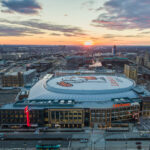
As we travel the Woodward Corridor, there are many HAA projects that have been completed and have contributed to the growth of Detroit. Projects include the Wayne State Welcome Center, the Addison Hotel, the Strathmore Hotel, Crystal Lofts, Woodward Place, Hamilton at Midtown, Woodward West, Detroit School of Arts, and City Modern.
Our work on the Hudson’s Tower with the Bedrock team involves enhancing the downtown area with this major new landmark building and thinking about how it intersects the ground plane and surrounding streetscapes.
We rode by the Port Authority Building the other day that we designed on the Detroit River. We suggested a second floor be added to what was originally going to be a one-story structure. Now, there is a gathering event space on top that takes full advantage of the riverfront views. This banquet and meeting space has had a positive impact on the Port Authority’s bottom line and has enhanced the visitor experience.
We are thrilled to be working on the expansion of the Music Hall and how to craft this new building next to the historic Music Hall. This addition will enhance the hall and will shine as a beacon welcoming visitors into this vibrant district.
Q: How does developing the economy in Southeast Michigan come into play in your work?
A: The projects we help bring to fruition and the overall momentum happening in Detroit play a huge role in sustaining and advancing the economy in Southeast Michigan.
When I think about the Henry Ford Health right in Midtown, we are proud to be part of the design team. We are influencing how this large development meets the ground plane and embraces the surrounding community. This is critical for the success of this project. The sheer number of jobs this project will create is good for the city and enhances the future of healthcare in Detroit and Southeastern Michigan. All of this will enhance the livability of our city.
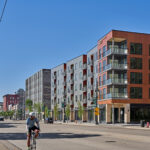
Over our thirty years of practice, I’ve seen development and construction blips occur in Detroit. Large projects begin and end and there have been development lulls in between. But now we have momentum. We are seeing sustained growth on many fronts. We are seeing new housing and sustained growth occur that is fueling our economy.
Q: How important is choosing suppliers and partners that also have a sustainability focus?
A: Very important. We work with many different engineering consultants that follow best practices for sustainable design.
Many of our contractors are LEED Certified and employ sustainable practices in constructing projects.
Q: What are your biggest challenges?
A: We are having difficulty finding professionals to grow our practice. We are currently a firm of 40 professionals and are looking to grow but struggling to find the right team members.
Also, quality assurance is critical. We practice internal design reviews and at times have peers review our project deliverables. We challenge ourselves to keep abreast of – and bring forth – current thinking in all aspects of our business.
Q: What are the biggest opportunities you see?
A: I think our biggest opportunities are related to solar power. The solar power industry has taken large leaps forward and there are now more opportunities to build solar into the design to supplement the electrical grid for urban areas.
I also see wind technology making advances.
I am also intrigued by water-driven technology. Are there ways to harness the power of the Detroit River and capitalize on that motion and activity to support the grid?
And of course, battery technology continues to make advances as we transition to electric-powered vehicles.
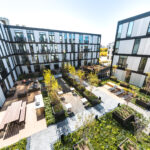
Q: You are on the Paradise Valley Conservancy Board and your headquarters sits in Paradise Valley. How does that impact your work and your thinking?
A: Hamilton Anderson is approaching our 30th anniversary and we have been in Harmonie Park – now called Paradise Valley – all of that time. The building was built in 1885 and was used for processing hides of animals as part of the fur trading industry. We have repurposed it into a loft/ office building. It has been a mission and goal to reuse the buildings that surround the park. For HAA it has been about adaptively reusing structures that are antiquated and seem no longer useful. The question becomes how can we refashion these spaces for new uses?
From our office, it is wonderful to walk out our door and walk through the park, take a bike ride, or stroll around downtown at lunchtime to see what is new in the city. At one time, one could describe downtown as a ghost town and now it is a bustling and rich environment. It exemplifies the fact that you don’t have to demolish and throw away older buildings. We can recycle them most often for a new purpose.
I’m excited about this momentum and we are riding the wave looking forward to the next ten years of practice.
Be sure to subscribe to our newsletter for regular updates on sustainable business practices in and around Detroit.
Kim Kisner
- All
- Business
- Community
- Education
- Events

ZF Group, a global technology company with its North American headquarters in Northville, specializes in systems for passenger cars, commercial vehicles, and industrial technology. With a focus on next-generation mobility, the company develops solutions that address electrification, automation, and digitalization while aiming to improve safety, efficiency, and sustainability in transportation. SBN Detroit interviewed Anuj Shah, Sustainability Lead, for the Americas, to explore the most pressing environmental challenges in...

The Chip Bag Project, based in Detroit, is a sustainability initiative that upcycles hard-to-recycle snack packaging — particularly chip bags — into insulated sleeping bags for individuals experiencing homelessness. Founded by Eradajere Oleita, the project addresses both environmental waste and housing insecurity by transforming materials like Mylar into practical, thermally efficient solutions. In June, Oleita was among Trelllis’s 30 Under 30, its annual recognition of the brightest young...

PowerPanel, headquartered in Oxford, focuses on sustainable energy technology with a particular emphasis on hot water systems and thermal energy capture. The company designs and manufactures modular solar hybrid systems that integrate both photovoltaic and thermal components into a single unit. Its goal is to offer energy solutions that are more efficient, durable, and economically viable for a range of commercial and industrial applications. SBN Detroit interviewed Garth...






